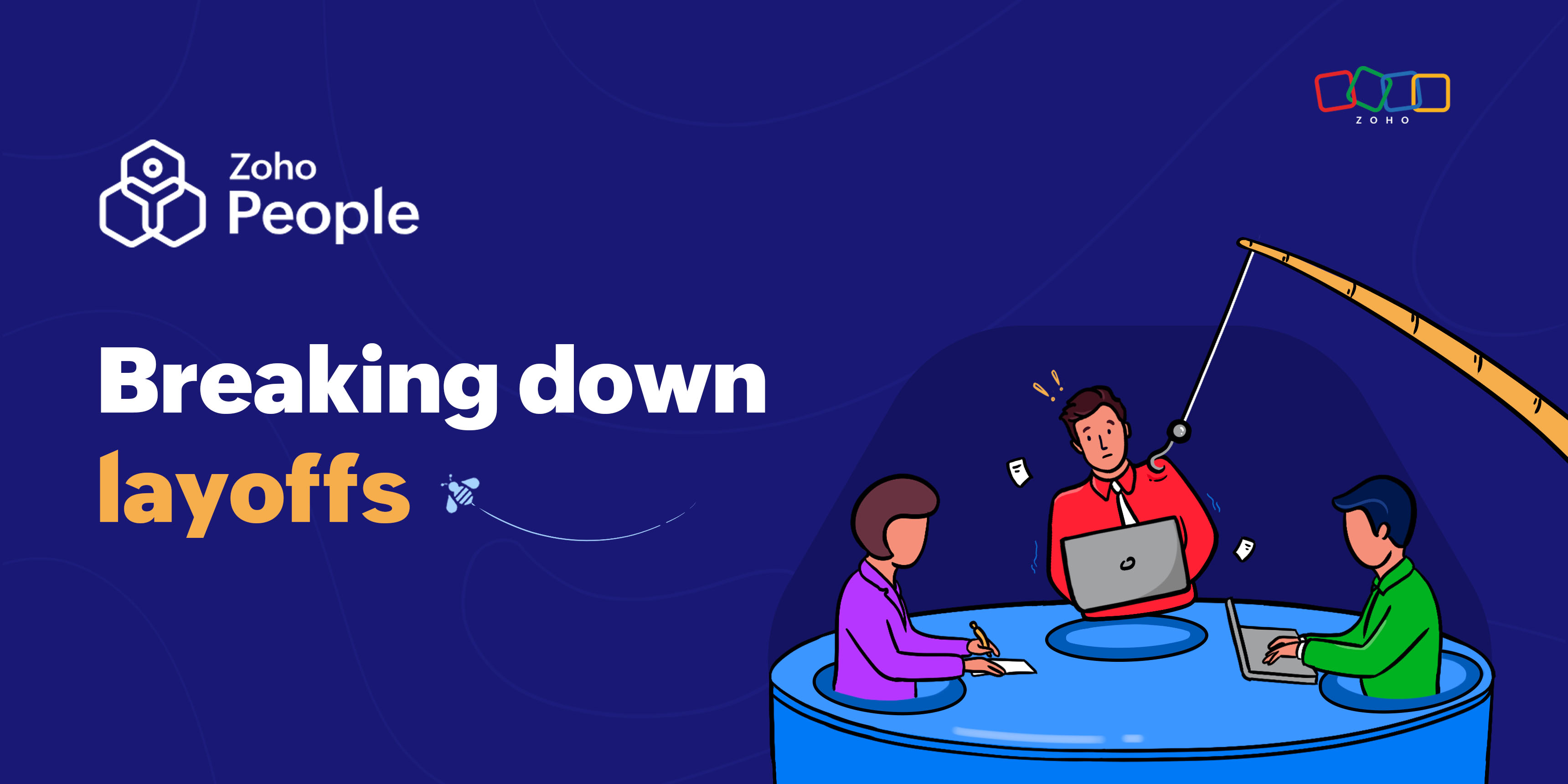- HOME
- HR insights
- Everything you need to know about layoffs
Everything you need to know about layoffs
- Last Updated : December 22, 2023
- 1.1K Views
- 5 Min Read

Layoff is a word that usually sends shivers down every HR team's spine. It's often considered a sensitive and challenging action that organizations are often forced to do to ensure their stability during economic downturns and other tough financial situations. If a layoff is something that your organization is considering, you must understand the pros and cons so you can approach it with more empathy. In this blog post, we're breaking down everything you need to know about layoffs.
What is a layoff?
A layoff is a downsizing process where an organization terminates a certain number of its employees temporarily or permanently. Layoffs are often involuntary, and the employees are terminated not because they made a mistake but because the organization is going through challenging times or some other major change. Cost-cutting measures, automation, technological advancements, restructuring, and mergers and acquisitions are common reasons why organizations resort to layoffs.
What is an HR professional’s role during a layoff?
Because it concerns employee relations, HR teams play a vital role in the layoff process. First, as HR professionals, you must ensure that the layoff procedure doesn't conflict with any of the labor laws that apply to your organization. You'll also be expected to set the criteria for deciding which employees to lay off, deliver the message to the laid-off employees, and make sure that the aftermath of the layoff doesn't adversely affect your existing employees.
What are the best practices for managing layoffs legally?
Here are some tips that can help you manage layoffs in a way that doesn't bring legal implications to your organization.
Define the criteria for the layoff
When your organization decides that a layoff is unavoidable, you must develop criteria to decide which employees to lay off and which employees to keep. Some organizations may decide to lay off employees who have been with them for the least amount of time, some may decide to do away with employees whose performance levels are not satisfactory, and some organizations may terminate employees who don't have the required skill or knowledge levels for their roles. Some organizations also make it a point to let go of employees who bring a lower ROI. Whichever option you choose, make sure that it aligns with your organization's future plans and business goals.
Stay compliant
Two major laws that you have to ensure are followed when handling layoffs are the Worker Adjustment and Retraining Notification Act (WARN) and the Older Workers Benefits Protection Act (OWBPA). While WARN mandates employers to provide advance notice to workers in the cases of layoffs, OWBPA applies to workers over the age of 40 and states that age cannot be used as a criterion to lay off employees. When employees over 40 years old are laid off, they may be asked to sign an agreement that prohibits them from suing their organization. The Fair Labor Standards Act, the Americans with Disabilities Act, and the Age Discrimination in Employment Act are some other critical acts that you must know.
Disclaimer: These laws may not apply to all regions. That's why you must take a deeper look at the laws and acts that are specific to your region.
Communicate with empathy
As a rule of thumb, it's better to break the news to employees face-to-face rather than send mass emails when they're least expecting it. Encourage managers and your HR teams to provide employees with clear reasons about why they're being laid off. Let them know why they were included on the layoff list. Be prepared to honestly answer both practical and emotional questions from the affected employees. Let them know when and how the termination will happen. Acknowledge that it's very hard news to process and elaborate on the support that you're going to offer your employees. It's always ideal to send a follow-up email that details every aspect of the termination along with other paperwork that has to be completed.
Offer ongoing support
As a way to support laid-off employees, most organizations offer severance pay, which is financial compensation that can help them navigate the sudden transition until they find a new job. The sum is mostly based on the employee's salary and their total years of service. In some cases, the organization may continue to offer benefits such as health insurance coverage and retirement benefits for a certain period. You could also help them find a new job by offering references, listing job openings, and providing career coaching or job training programs.
What happens after a layoff?
After the layoff, the morale of your remaining employees may drop steeply. That's why it's good to explain the reason behind the layoff, the criteria used to decide the list of employees to be laid off, and the upcoming plan to build your business back up. Let them know the support that you've extended to the affected employees. Encourage your C-level leaders to organize an all-hands meeting to address all of the questions that your remaining employees may have. It's also good to reassure them that you don't have any plans to lay off more employees in the future. Once this is done, encourage managers to elaborate on how there may be some changes in the roles and responsibilities of their team, considering the roles the laid-off employees filled.
How do you follow the WARN Act?
In the context of layoffs, the WARN Act is a United States labor law that mandates organizations to provide written notice to the affected laid-off employees at least 60 days in advance. The purpose of the WARN Act is to provide the affected employees enough time to look for other opportunities. Any organization with more than 100 employees working out of regions to which the WARN Act applies must comply with it. The WARN Act does not apply to employees who have been employed for fewer than six months within the past year or those who work less than 20 hours per week.
Wrapping up
Managing layoffs is hard for everyone involved. With a little bit of empathy, you can make the transition as smooth as possible for your affected employees and make sure that this decision doesn't damage your brand's reputation forever.
 Tarika
TarikaContent Specialist at Zoho People


